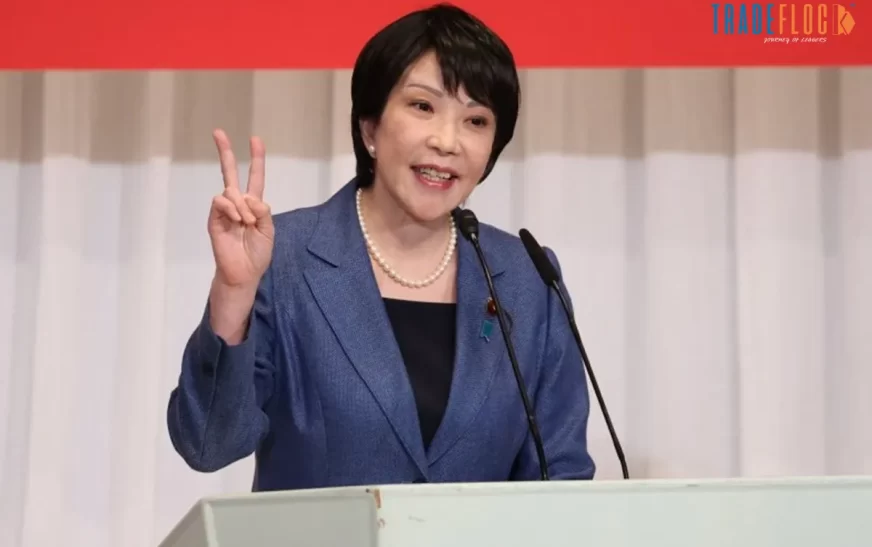Japan’s ruling party elected conservative Sanae Takaichi as its leader on Saturday, positioning her to become the nation’s first female prime minister potentially. The Liberal Democratic Party (LDP), which has dominated Japan’s politics since the end of World War II, chose Takaichi, 64, amid public unrest over rising prices and growing opposition, including parties advocating stimulus measures and stricter immigration policies.
Takaichi, the only woman among five candidates, won a runoff against moderate Shinjiro Koizumi. She’s a staunch supporter of former Prime Minister Shinzo Abe’s economic policies, known as ‘Abenomics,’ favouring expansionary fiscal measures and easy monetary policy. Her victory could unsettle markets due to her stance on fiscal spending, potentially affecting investor confidence and the value of the yen.
Winning the party leadership, she aims to boost the economy through tax cuts and increased subsidies while emphasising fiscal prudence. She also expressed intent to honour a trade deal with the U.S. that lowered tariffs in exchange for Japanese investment, and she plans to travel abroad more to promote Japan’s interests.
Her nationalist views, such as visits to Yasukuni Shrine and calls to revise Japan’s pacifist constitution, may upset neighbouring countries like South Korea and China. She has suggested forming a security alliance with Taiwan, which drew praise from Taiwan’s President Lai Ching-te.
Takaichi also advocates increasing women’s representation in government, signalling a shift toward gender inclusivity. However, her conservative stances on social issues, such as opposition to allowing married couples to keep separate surnames, may limit her appeal among women.
Also Read: Dutch giant ASML Slams EU after PM Modi’s Interaction
Her leadership could weaken the rise of anti-globalist parties like Sanseito, which campaigns against foreigners and immigration, issues Takaichi has highlighted with anecdotes about tourists misbehaving in her hometown. Her victory marks a significant moment in Japan’s political landscape, with her intent to reinforce national interests and project a more assertive international presence.











